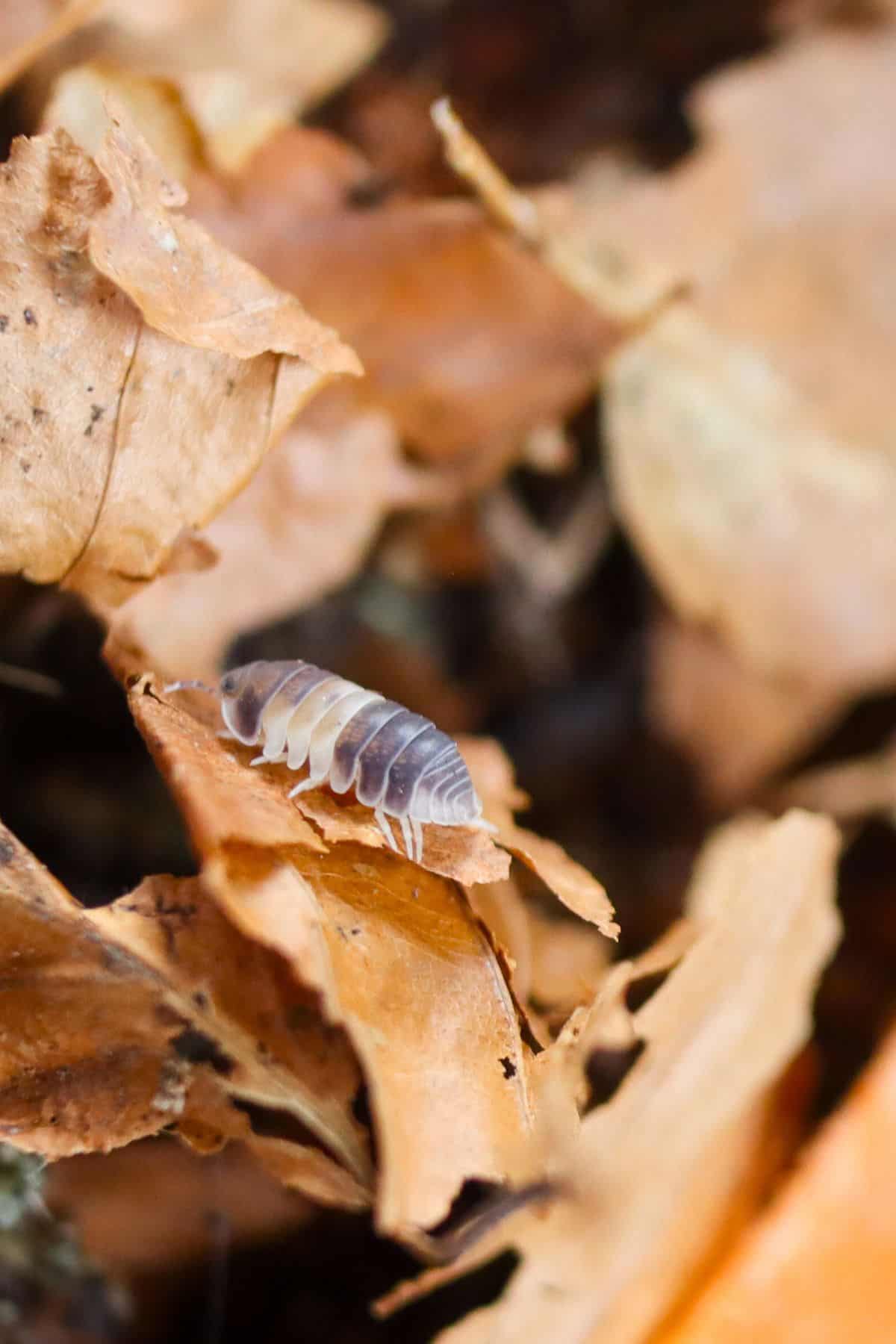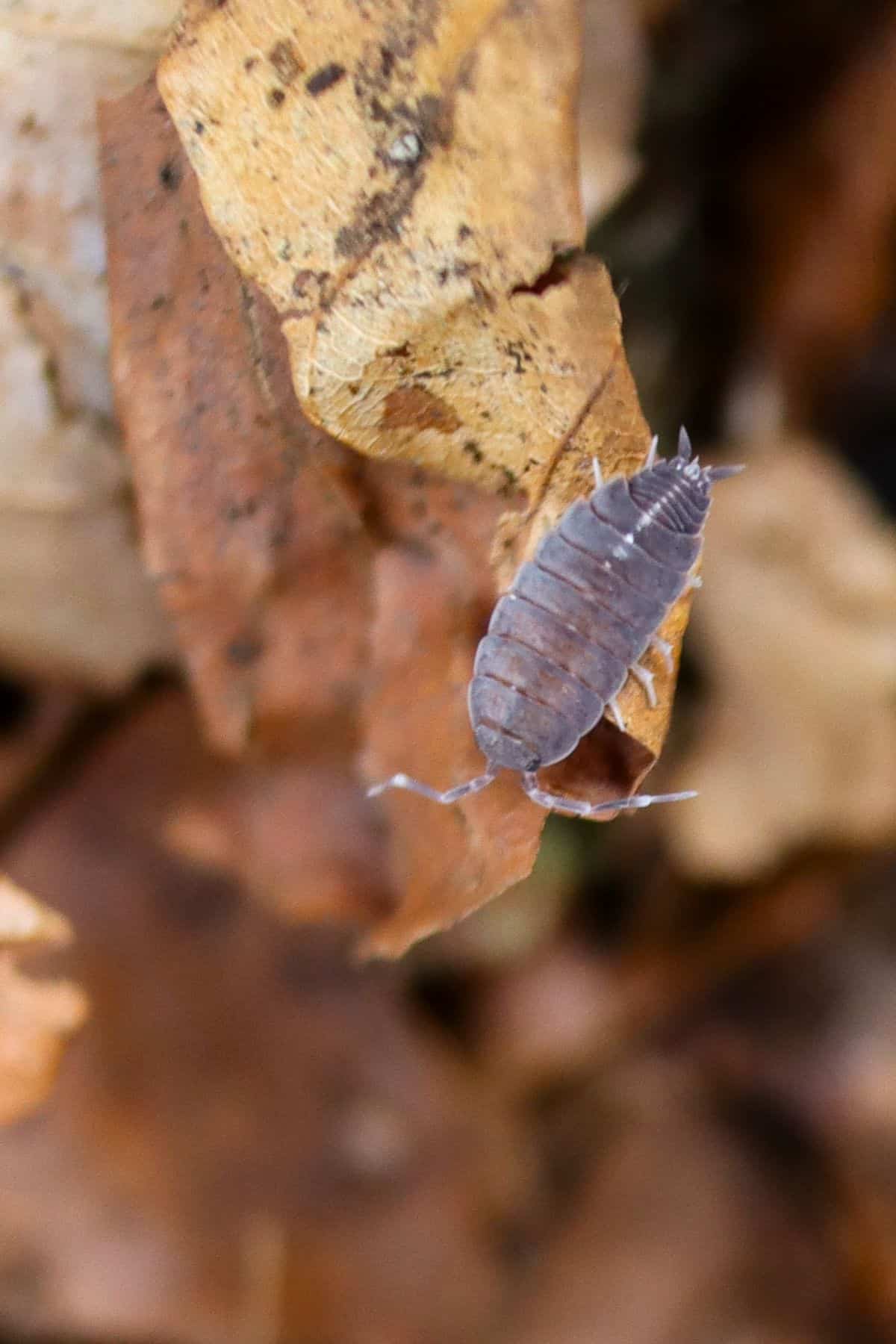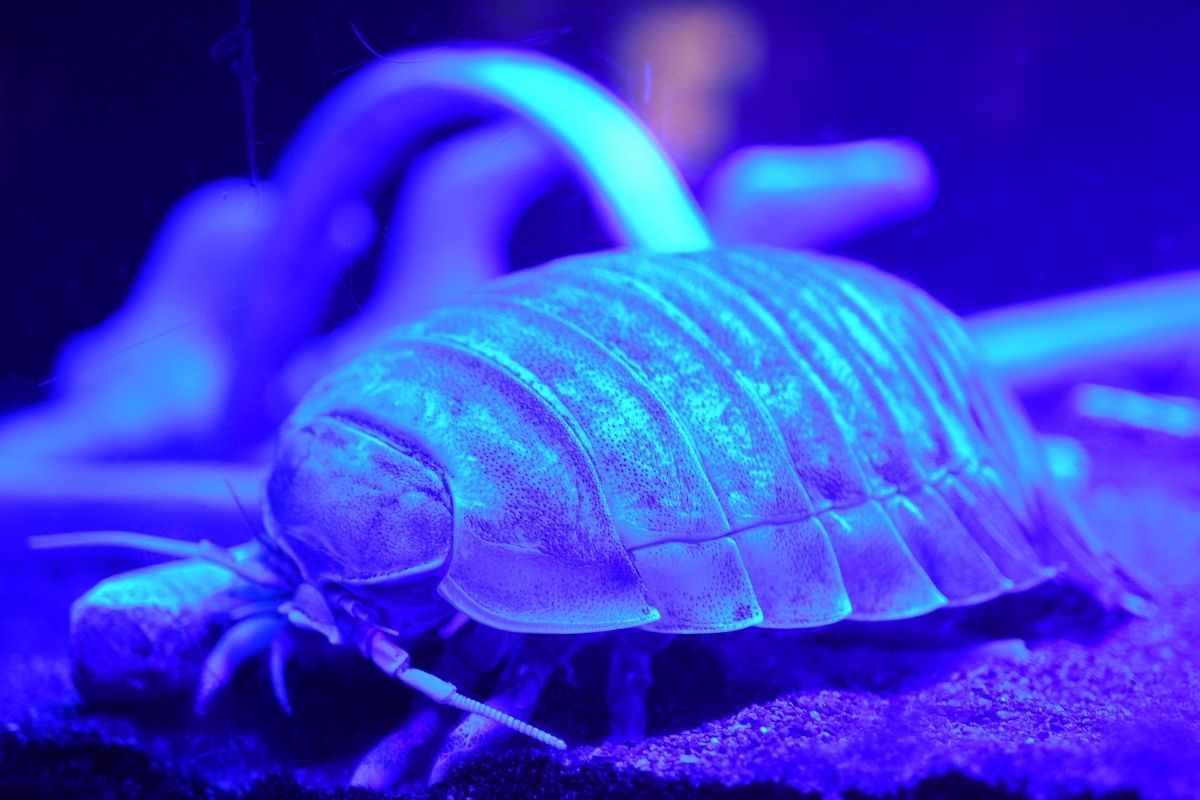Pill bugs, roly-polies, sowbugs, woodlice – isopods go by many names.
Though these critters are neither bugs nor lice, but rather crustaceans. Ones that are surprisingly successful at thriving in all sorts of environments.
And we should be thankful too. So many of them play a vital role in many of our planet’s natural processes, and nowadays, they’re making waves in our homes, too (for various reasons that we’ll get into).
But, what are isopods exactly? Where are they found, and what they’re used for?
Join me on a journey of curiosity and crustaceans.
Let’s go!

Terrarium Tribe is reader-supported. When you purchase through links on our site, we may earn an affiliate commission (at no further cost to you). 💜
What is an Isopod?
Isopods are an order of crustaceans with an enormous amount of diversity
They’re all invertebrates with the same basic anatomy – each has a segmented body, four sets of jaws, fourteen legs, and compound eyes – but they come in a vast array of shapes, sizes, colors, and patterns.
Well, it makes sense when you learn there are over 10,000 estimated species of isopod!
Even within each individual species, the isopod hobby has exploded with new varieties and color morphs as breeders compete to produce the most striking colors and designs. As a result, these days, there’s a bountiful visual buffet to choose from (and some of the marine isopods are actually edible too).

Thanks to this diversity, they have successfully colonized almost every corner of the planet and have increasingly made their way into our homes.
Haven’t you heard? Isopods are on the rise.
They’re increasingly used for bioactive terrarium cleanup crews and being kept as pets.
But don’t worry, they’re not dangerous.
Isopods can’t bite, and though marine isopods can exhibit some carnivorous and even parasitic behaviors, the terrestrial isopods we’re used to seeing are all detrivores (they eat decaying organic matter).
Where are Isopods Found?
Isopods are found on land, in freshwater, and the oceans.
It wouldn’t surprise me if we found them in space…
Around half of the species are found in the sea, and the rest are distributed in almost every type of land environment. These versatile critters are literally everywhere!
- Terrestrial isopods have developed their own unique respiratory structures that work on land, but they still need consistent moisture and a humid environment. So that’s why you’ll typically find them under logs or burrowed in the ground. That said, they’re still found everywhere from temperate and tropical to desert environments.

- Freshwater isopods are typically found in rivers, lakes, and caves. Unfortunately, they’re not great swimmers, so they tend to stay in low-flow areas. However, there are only a relatively small number of species in North America compared to the massive diversity in the ocean.
- Marine isopods, on the other hand, are quite a different ballgame. The extreme pressure and harsh ocean conditions have produced some freaky evolutions. Resulting in giant isopods that stalk the deep seafloor and parasitic isopods that eat (and weirdly replace) fish’s tongues.

What are Isopods Used For?
Terrestrial isopods are incredibly useful in many of the world’s natural processes.
In fact, it’s for many of the same reasons that isopods are being used for bioactive terrariums and vivariums. That, and the fact they’re pretty cute and cool.
Here we’ll explore what isopods are used for and why they’re booming as a hobby.
Terrariums and Vivariums
In a terrarium environment, isopods go to work feeding on any decaying organic matter (which is exactly what you don’t want in there). The perfect problem-munching machines.
They’ll help keep everything clean and help to recycle the material into nutrients for plants. This is particularly useful in pet vivariums, too, where you have animal waste to take care of.
How many you need will depend on the size of your terrarium container and the type you choose.
After all, some terrestrial species are better than others regarding isopods for bioactive terrariums. Look for active and hardy species that can thrive in terrarium environments.
Check out Isopods and Springtails – The Ultimate Bioactive Combo for more help in picking the best species!
Pets
For the exotic, exciting-looking isopods that are too delicate (or too lazy) for bioactive terrarium life, these are great candidates to become pet isopods!
Like any pet, you’ll want species that are active and aren’t shy.
But besides that, whichever looks best is the most important, right?

Breeding (& Collecting)
The likes of Porcellio and Armadillidium have been in the hobby for a long time and have produced a wide range of cool color morphs.
To learn how to breed isopods effectively you’ll need to have some basic genetics knowledge. Knowing which colors and patterns arise from what gene will help a lot in creating specific results.
Or, you can just throw some isopods together and hope for the best!
Jokes aside, if isopod breeding is beyond you for the moment, why not find your perfect isopods pet?
👉 Check out the range of isopods for sale on our shop.
What Do Isopods Eat?
As nature’s detritivores, isopods eat decaying organic matter from a wide variety of sources.
In the wild, this comes in every conceivable form. From plants, animals, fallen trees and leaves, and even fungi (not so much mold, but more so the fruit).
For those keeping isopods in terrariums and as pets, we have a more focused solution.
Decaying wood and leaf litter still form the backbone of their diets.
That’s why isopod keepers maintain a consistent supply of leaf litter and softwoods in an enclosure (cork bark is super popular too). Isopods will even eat things like cardboard and the very substrate itself (if it’s organic, e.g., earthworm castings).
👉 Shop pin oak leaf litter on our online store.

Now, decaying woof and leaves are the staple diet, but when keeping them in captivity, you need to supplement too.
I see a lot of questions about “can isopods eat lettuce” or “can isopods eat tomatoes.” In truth, isopods can eat all kinds of fruit and vegetables. Check out my full Isopod Food Guide for more help.
Most species (such as Cubaris) enjoy a high protein and calcium diet too. So you can feed them things like fish flakes, freeze-dried minnows, or shrimp.
👉 We sell a complete nutritional isopod food supplement on our store.
What about giant isopods? Well, they seem to eat just about any animal that falls to the sea floor.
That’s a Wrap!
So, in short, what are isopods? Tiny crustaceans that are fun to collect and even more fun to keep. Just not the giant ones…
And if there’s one thing all Isopods have in common? They’re cool. That’s what.
